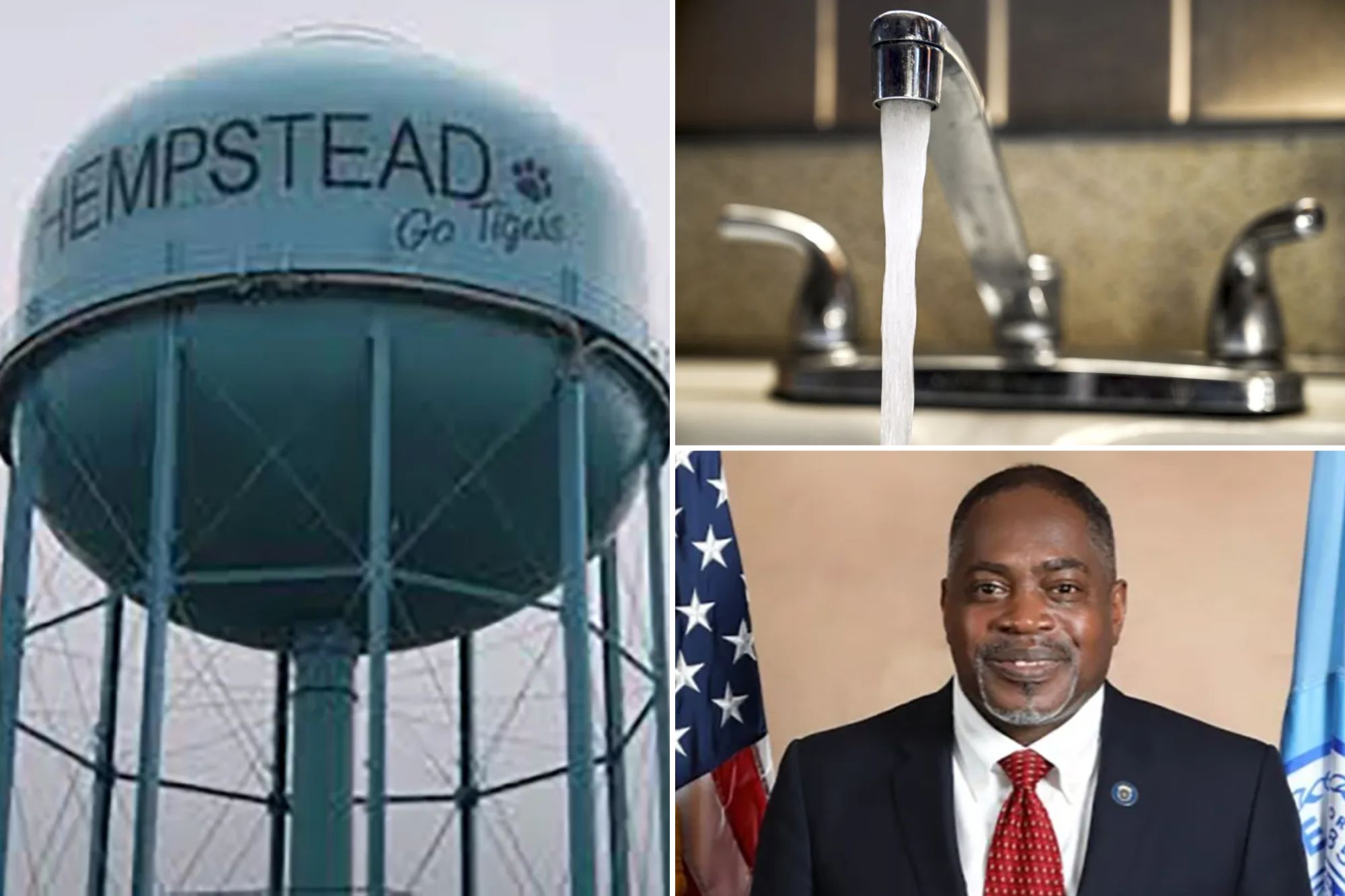
A Long Island village is demanding that the federal government help shell out for a brand new, $55 million water treatment facility after the community has spent years ingesting toxic, carcinogen-laden drinking water.
“We will not allow the Village of Hempstead to be another Flint, Michigan,” Mayor Waylyn Hobbs Jr. told The Post Tuesday evening.
The Nassau County community has been battling astronomical levels of 1,4 dioxane — listed by the Environmental Protection Agency as a “probable human carcinogen” — for years, with the highest detected levels soaring 900% higher than what is permitted by New York state.
Health officials have tracked the unhealthy water quality down to the village’s more than 100-year-old water treatment plant, where all nine wells are loaded with 1,4 dioxane — the same chemical found in laundry detergent and shampoos.
The fed-up village has already drafted and approved plans to replace the failing facility, but is now calling for emergency assistance from its state and federal partners to pitch in for what is estimated to be a $55 million project.
“Then that burden wouldn’t fall on the residents of the village Hempstead,” said, Hobbs, a Democrat who has been in office since 2021.
“We are the largest village in the state of New York, but we are a community that many of our people suffer economically. And we know in Long Island all together, the cost of living is very difficult.”
According to a 2022 survey, the Village of Hempstead’s highest levels of 1,4 dioxane has fallen between 7 and 10 parts per billion, which well exceeds the 1 part per billion maximum contamination level that New York state established in 2020.
PFAS — or so-called “forever chemicals” — have also been detected in the drinking water.
The chemicals were released into the groundwater by commercial and industrial sources, eventually being sucked up by the village’s nine wells and dispersed to its 55,000-person-strong community, the survey indicates.
The presence of the chemical is common across Long Island, whose only source of drinking water comes from groundwater aquifers.
Although research on the potential carcinogen is still novel, the EPA estimates that those who consistently ingest high levels of 1,4 dioxane have a one-in-a-million increased chance of developing cancer.
The people in the Village of Hempstead also have little room to protect themselves — with the median household income falling 41% below the rest of Nassau County, Hobbs says his constituents can’t afford to buy bottled water, order delivery or even water filters.
And while there are no known cases of cancer in the community directly linked to the drinking water, Hobbes said officials aren’t waiting around to find out.
“It’s nothing that is new in the water, but we want to make sure that we take care of it now, to protect not only the residents that we have now, but our future, our children, our children’s children, generations,” the mayor said.
Whether the state and federal governments cough up the funding or not, the village will plow ahead with its plans to build the new facility.
On Tuesday, the board of trustees voted in favor of financing $55 million for the new water treatment plant, but with clear hopes that the government will help alleviate the heavy burden.
When asked if the federal and state government owes the money to the Village of Hempstead for the new plant, Hobbs said: “Of course, because the same residents that elect me and the same residents that elect our state and federal officials.
“Absolutely, it’s their constituents.”














